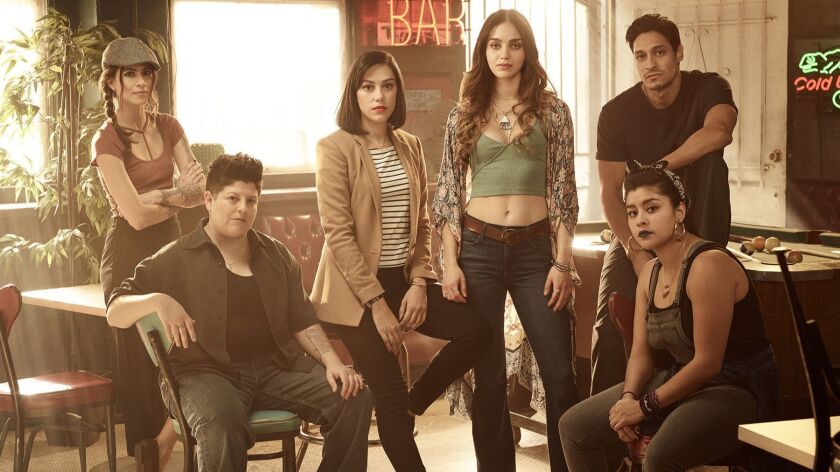Gracias a la Vida.
Vida on the STARZ network breaks new ground in television storytelling with a chilling chingazo. For those not familiar with the term, it’s a big, honking whack.
There are enough conflicts among families, cultures and economic classes to fill the toughest Telenovela rulebook. Add to this mix generous servings of sex with a twist: Vida sex scenes are usually plot elements for characters to evolve. Crunchy on the outside, creamy on the inside. Yummy.
What Vida does best of all, however, is shine a light on the margins, seams and borders — those fragile and also those that are fixed—between the old and new. Vida does television surgery on eras, cultures, sexual orientations and generations then lays them open for us to see how we live and love, how we balance our values, what we keep or discard as Vida, life itself, veers just out of our reach.
Vida is funny in a heartbreaking way. It travels the rocky paths of traditional Latino patriarchy, but the journey includes modern versions of machismo lite, with new ways for power to proceed wearing new clothes. There are woke, willing and even some representative weasly Latinos in Vida. Young and veteranos, too. We see every bump, misstep and chingazo that Vida may deal them with no sentimentality for absorbing the shocks.
The series confronts a neighborhood’s gentrification in East Los Angeles. It follows a video blogger, Marisol, as she chronicles local businesses being remade for incoming yuppies, leaving locals without affordable services.
The series unsentimentally examines Mexican American culture’s unequal treatment of daughters and sons. A caring and devoted daughter, Marisol, is overlooked in her father’s will, while her brother, whose irresponsible forgetfulness is the cause of her father’s accidental death, is left the family home. Marisol‘s journey from dutiful daughter to the girl who falls for the wrong wrong guy to finally forging her own difficult way to fight gentrification and landing a freelance job as a video blogger is a tale of triumph after betrayals and scorched friendships in her fledgling career as a neighborhood activist. She convinces her brother to add her name to the deed. Indeed.
The force of the series is its ability to hold firm in its commitment to celebrate and affirm Latino culture, complex and intact, the good, the bad, the whole enchilada. Vida walks with head held high to take her place at the great American table, unapologetic and without the need of an invitation.
I am grateful for Vida because it recognizes all culture’s little treasures, the taco houses, the corner bar, that hold our history and lives as much as our homes, churches, schools and museums.
The series itself is an example of fighting for justice and representation that echoes Vida’s fictional main storyline.
I’m most grateful to have lived long enough to see series show runner Tanya Saracho (born in Sinaloa, Mexico//Raised on the TX/TampsBorder//Nurtured by Chicago Theatre) and her team of creatives take the tools of entertainment and train them on social justice and empowerment both on screen and mas importante in the writing rooms of a television network. Gracias a la Vida!

No comments:
Post a Comment